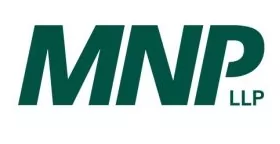What is a good rate to charge customers for our service? This is a great question and one that everyone along the supply chain – in silviculture, engineering and full-phase logging – should be asking when managing business today and setting future goals. But to find the answer, you need to ask a different question:
What rate of return should your business be generating?
When one deals with stocks and bonds, determining a good rate of return is easy. Investing in the forestry business is not quite the same. And, by rate of return, don't confuse this with just earning a pay cheque. The investment dollars are significant, the factors that are out of your control are many and the time between a downward market and an upward market is extremely variable.
For an investment to be worthwhile, the expected return on capital must be greater than the cost of capital. The required rate of return is the minimum acceptable rate of return at a given level of risk; the higher the risk, the higher the rate of return demanded. An investment must be able to generate a certain level of return in order to justify its acquisition.
A simple answer is that the return on your investment should exceed your cost of borrowing. This is not simply the rate that the bank charges you to borrow. You must consider your overall cost of borrowing and account for risks within your business environment. Risks relate to the factors that may impact your operations earnings. As we all know, there are more than a few factors that can impact our earning potential and these are out of our control. Snow season, fire season, market conditions, fuel prices, union issues, staff retention, age of operators, organization and planning of your licencee, logging chance, productivity of equipment, engineering and layout and solar flares are just a few.
From an economic perspective, risk represents the variability in your business's return. If things went perfectly each year, you'd make the same income each year. Therefore, risk represents the things that are out of your control, but have the direct ability to impact your bottom line. This is probably the biggest factor that is overlooked when setting rates. We naturally tend to look at how things are for the moment, forgetting that we need to prepare for tomorrow and the unknowns.
Talking to a business valuator is a great way to gain perspective on where your business should be with respect to required rates of return. A certified business valuator (CBV) is involved in buying and selling business every day and assessing whether the business will generate the required rate of return is literally what CBVs do. Michael Sileika of MNP's Business Valuations says that, "The more variables that a business has in its operations and the more volatility a business is subject to, the higher the rate of return that business requires in order to justify investment."
Depending on the size, type and composition of a business, the return the business should generate will fluctuate. As a result, the typical smaller contractor will require a higher rate of return than a licensee. It is not realistic to compare the licensee's expected rate of return to that of the contractor. The risk profile of the contractor group and the list of variables affecting the company is different. The asset base of the contractor and licensee are drastically different. The licensee will have a larger and more stable asset base, with longer-term investment time frames. A contractor will have less certainty and less security in its asset base to generate income.
So what is a reasonable rate of return within the forestry industry? Due to the significant risk factors that affect the industry and cyclical nature of the marketplace, my opinion, after discussions with MNP's CBVs, is that the required rate of return on total assets for a forestry business is 25–30% based on Earnings Before Interest and Taxes (EBIT). Amortization (or depreciation, as it is sometimes called) has been left out as the focus is on the free cash flow that the business is generating. Amortization should represent the capital reinvestment that your business requires annually. It is a real consideration, not money you can give back in your rate negotiations. The expected rate of return between 25% - 30% on total assets using EBIT, is how you would determine the rate for your services. However, the actual results will more than likely vary due to all of the risk factors listed above and more.
How many businesses are achieving this? Very few, as many in the industry have been struggling. The key word here is "business." Many in the forestry sector are there as a way of life and they forget that owning a company is about running a business and making good business decisions.
To put this in perspective, do you want to acquire a brand new log loader with a processor head to earn 2–3% on your $850,000 investment? Wouldn't it be a whole lot less stressful to put the money into stocks and bonds? No employee issues, no need for a banker or accountant, you get to sleep in...it's a no-brainer.
So if you are going to be in the forestry business long-term, you need to target your initial rates for services so that you can have an 'opportunity' to achieve a good rate of return of 25-30% on your overall investment. Some may question the reasonability of this level of return. The reality is not many are achieving a return of 25–30%. This is evident by the serious shortage of contractors available to get the AAC harvested both on the coast and in the interior. The industry does not appear attractive to people due to the lack of reward for the given amount of risk. In order to attract investment and just as importantly employees, everyone along the supply chain needs to have an 'opportunity' for success equivalent to the risks assumed.
The content of this article is intended to provide a general guide to the subject matter. Specialist advice should be sought about your specific circumstances.


